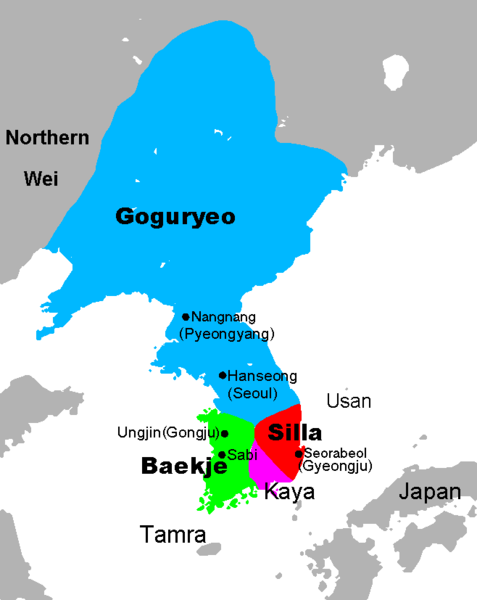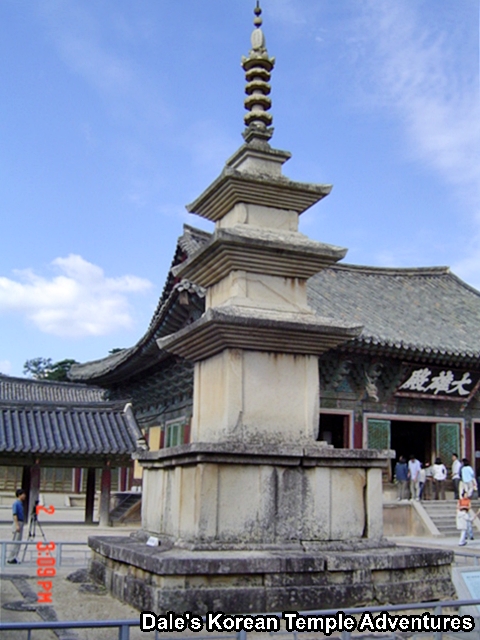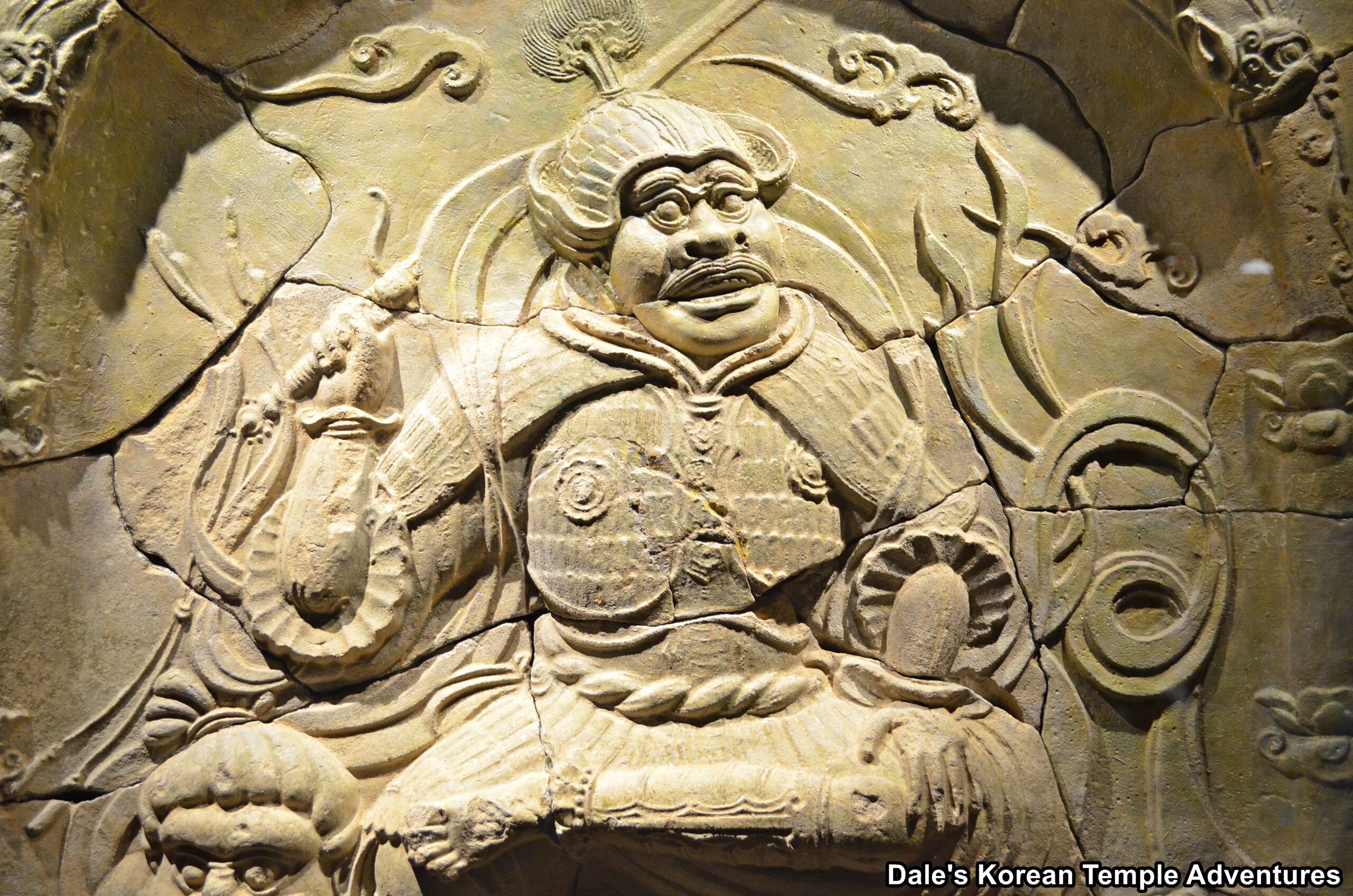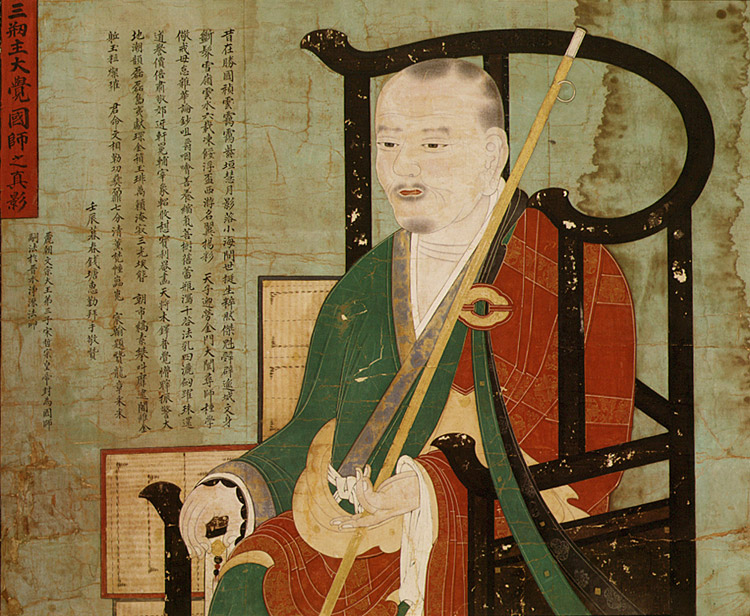Other Early Gyo Sects

In addition to the five main Gyo sects that thrived during the Three Kingdoms Period in Korea (18 B.C. – 660 A.D.), there were lesser known Gyo sects that were also established at this time. And while they might have been less popular than the other five major Gyo sects, they survived up until the end of the Goryeo Dynasty (918-1392). These sects are:
1. Chongji-jong (Esoteric Sect)
Jineon, which is also known as Chongji-jong, is a form of Esoteric Buddhism (Vajrayana). The primary text of this sect were the Dharanis. The Dharanis are Buddhist chants, incantations, and/or recitations. And they are Sanskrit or Pali phrases. These phrases can, and were, transliterated into Korean. These phrases are believed to be protective. And they are believed to generate merit for those Buddhist that recited them. Also another name that this sect was known as was the Jinyeom-jong sect.
This sect was first established on the Korean peninsula by the monk Hyetong during the reign of King Munmu of Silla (r. 661-681 A.D.). Rather oddly, Hyetong was influenced to become a monk after witnessing a warning sign from an otter. And later, Hyetong went to Tang China (618–690, 705–907 A.D.), where he searched for the teachings of Śubhakarasiṃha (637-735 A.D.), or Seonmuoe – 선무외 in Korean. Originally, Śubhakarasiṃha said of Hyetong, “How can a person from Silla become an instrument of the dharma?” Afterwards, Hyetong faithfully studied under Śubhakarasiṃha for three years; and yet, his master still refused to give the Korean monk his consent. Angry, Hyetong put a burner on his head and stood in the garden of their temple. Suddenly, Hyetong’s head cracked open with a thundering sound. Śubhakarasiṃha was impressed, so he cured Hyetong with his finger. Hyetong’s wounds healed completely except for a scar that resembled the Chinese character for “king.” Afterwards, Hyetong was known as Wang-hwasang. It was from this point onward that Śubhakarasiṃha started to teach Hyetong all of the secrets and teachings of the sect. Eventually, Hyetong would return to Silla in 665 A.D.
Upon his return to Silla, King Sinmun of Silla (r. 681-692) was suffering from an ulcer on his back. Hyetong was asked to cure this disease. Hyetong then recited a few mantras and cured the king completely. In part, Bongseongsa Temple was created out of appreciation. This sect would grow with the addition of other temples like Chongjisa Temple in Kaeseong. Also, and rather interestingly, there were 8th century scrolls discovered inside Seokgatap Pagoda at Bulguksa Temple that were Dharani texts. These texts are considered the oldest known printed texts in the world.

2. Sinin-jong (Mudra Sect)
The Sinin-jong sect is a translation of the Sanskrit word for mudra. In English, this sect is known as the Mudra sect, which means “Munduru-jong” in Korean. This sect, which studied ritualized hand gestures, which are known as “suin” in Korean, were the very essence of it teachings. It was first started on the Korean peninsula by the monk Myeongnang during Queen Seondeok of Silla’s reign (r. 632-647 A.D.). It was centred around Geumgwangsa Temple.
Additionally, Myeongnang had a hand in protecting Silla from a Tang invasion. Sacheonwangsa Temple in Gyeongju started to be built after King Munmu of Silla (r. 661-681) consulted Myeongnang about what he should do. Myeongnang told King Munmu of Silla to build a temple, which would be Sacheonwangsa Temple, in an attempt to gain favour from the Buddha to protect Silla. With a force of half a million soldiers, Tang approached the Silla Kingdom from the sea. King Munmu of Silla instructed the yet to be completed Sacheonwangsa Temple, as directed by Myeongnang, to be hidden with silk and grass. King Munmu of Silla then invited twelve prominent monks to perform the Mudra Rite of Esoteric Buddhism. This ritualized work, rather amazingly, resulted in a massive storm in the middle of the sea destroying the invading Tang military ships.

Rather interestingly, Myeongnang was a nephew of Jajang-yulsa (590-658 A.D.). Additionally, all three brothers became monks: Gukgyo, Uian, and Myeongnang. Myeongnang went to Tang China in 632 A.D. to study Buddhism. And in 636 A.D., he returned to Silla. After the defeat of the Tang forces, the Sinin-jong sect thrived throughout Silla. Temples dedicated to this sect included Wonwonsa Temple and Dolbaeksa Temple in Gyeongju, and Hyeongseongsa Temple in Kaeseong.
And while Chongji-jong and Sinin-jong were both esoteric in tradition, they developed in Korea as two distinct sects. At the start of the Joseon Dynasty (1392-1910), the Chongji-jong sect was absorbed into the Namsan sect, where it was finally joined to the Seon sect. The Sinin sect, on the other hand, was absorbed into the Jungdo-jong sect. Together, they would form the Jungsin-jong sect that was later absorbed into Gyo (the doctrinal sect).
3. Seongsil-jong and Gusa-jong (Lesser Vehicle Sect)
Unfortunately, we don’t know who or when the Lesser Vehicle sect was founded on the Korean peninsula; however, we do know that it exerted some power up until the Goryeo Dynasty (918-1392). This is easily understood from the “Royal Mandate to the Chief Lecturer of the Lesser Vehicle Sect,” or “Dongmun-seon” in Korean, which is divided into two separate schools: the Seongsil-jong sect (Emptiness) and the Gusa-jong sect (Existence). Amazingly, the two sects had two different textual traditions. However, in the royal mandate, they are simply referred, together, as the Lesser Vehicle. As a result, it’s impossible to distinguish one from the other. However, in the opening of the royal mandate, it states, “All dharmas are ultimately empty, only the Mind exists.” From this, we can infer that it’s referring to Seongsil-jong.
However, if we look at another piece of writing; notably, Choe Chiwon‘s “Stone Inscription of National Preceptor Jijeung,” or Jijeung guksa-bi” in Korean, it states, “The Abidalma Daebibasa-ron was the first to be introduced, and the four noble truths were the first to turn the wheel of the dharma. When the doctrine of the Great Vehicle was introduced, the whole country dazzled in the mirror of the one vehicle.” From this, we can understand that the Gusa-jong sect was introduced to the Korean peninsula first.
As for the Seongsil-jong sect, and written in the biography of Wongwang contained in the “Further Lives of Eminent Monks Compiled in Tang,” it states, “After mastering The Treatise that Accomplishes Reality and the Nirvana Sutra, and memorizing them, he was the first to understand The Treatise that Accomplishes Reality…” Wonhyo-daesa also wrote the “Commentary to The Treatise that Accomplishes Reality” in ten rolls. And in the Biographies of Eminent Japanese Monks, it states, “After Bojang of Baekje came to the Eastern Country [Japan], he wrote a commentary to The Treatise that Accomplishes Reality, and as far as lecturing on The Treatise that Accomplishes Reality was concerned, there was nothing that was not based on the scriptures.” This makes it plain that the two schools of the Lesser Vehicle were probably established during both the Silla and Baekje Kingdoms.
4. Cheontae-jong (Tiantai Sect)
Cheontae-jong is known as the “Dharma Flower Sect” in English, or more commonly as Tiantai Buddhism. It was transmitted, at this time, to the Korean peninsula by the monk Hyeongwang, who went to Tang China to study the Lotus Sutra. He learned under the second patriarch Nanyue Huisi (515-577 A.D.), who was the teacher of the Great Master Zhiyi (538-597 A.D.). After learning under Nanyue Huisi, Hyeongwang returned to Silla.
Later, the monk Beopyung learned from the ninth patriarch Jingxi Zhanran (711-782 A.D.), and he transmitted these teachings to his disciple Ieung. And Ieung transmitted these teachings to his disciple Sungyeong.
During the Goryeo Dynasty (918-1392), in an open Buddhist lecture at the newly founded Gukcheongsa Temple, Uicheon (1055-1101) said, “In ancient times the Bodhisattva Wonhyo said that it [Cheontae] was worth praise.” After this speech, Uicheon re-founded Cheontae-jong. And Cheontae-jong and Seon Buddhism, at this time, were called the Two Meditation sects (but more on this later).
